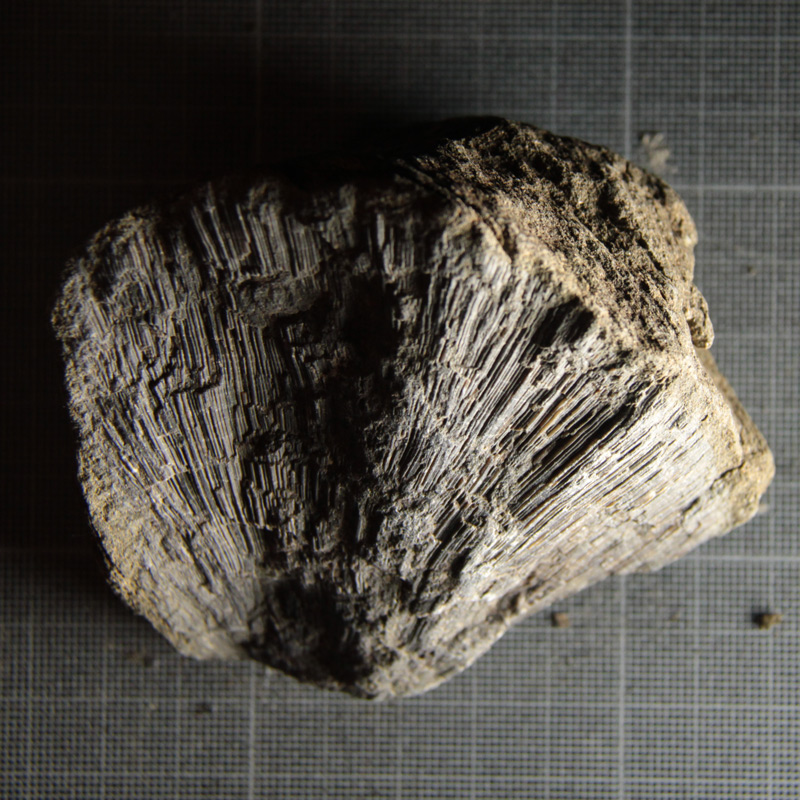This is a fossil of a Glossoptris tree branch. What makes this fossil interesting is at the top right of the photo, the formation of a limb, or new smaller branch can be seen. The other small hole on the lower right may be the result of a burrowing or boring insect that could have infested the plant or been the burrow of insect larvae. This can give an indication as to the health of the parent trees and the invertebrates that this environment may have supported.
http://en.wikipedia.org/wiki/Glossopteris













